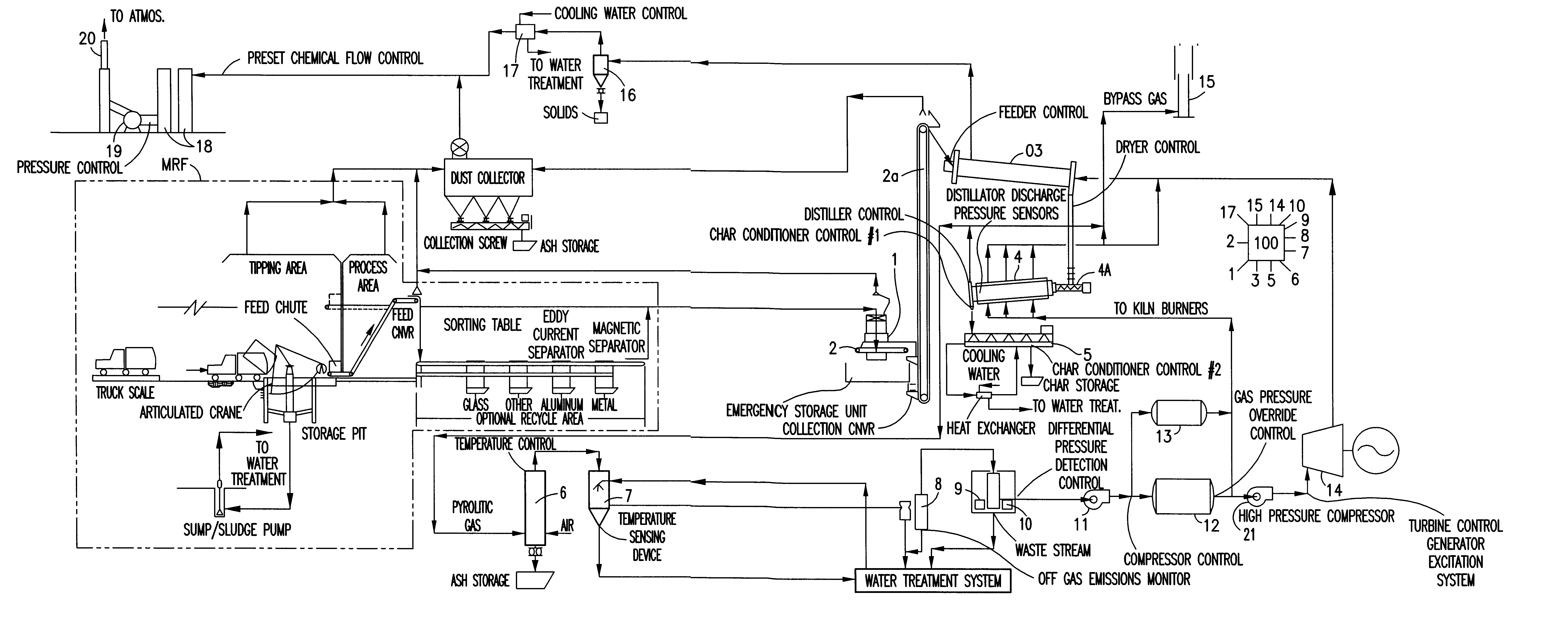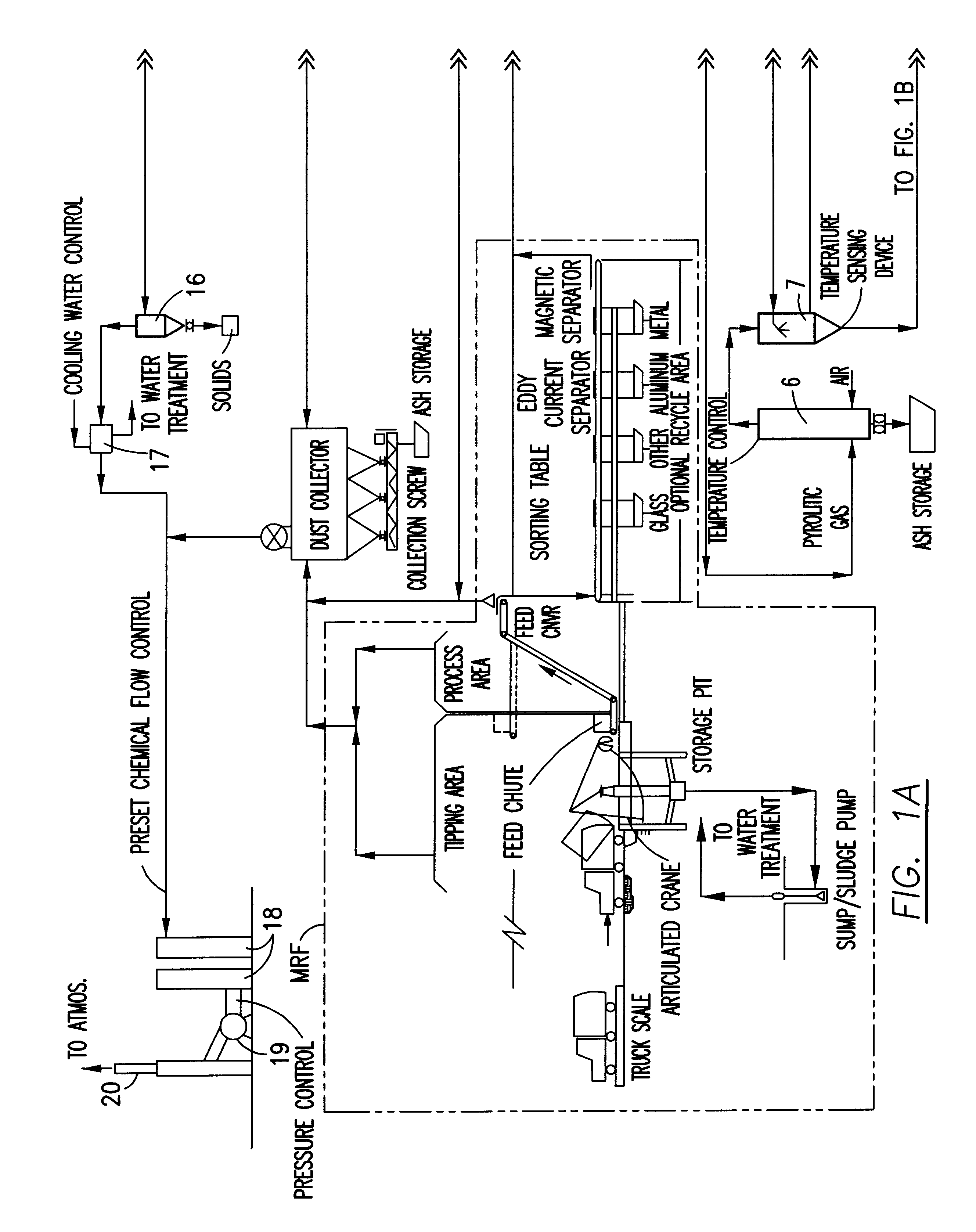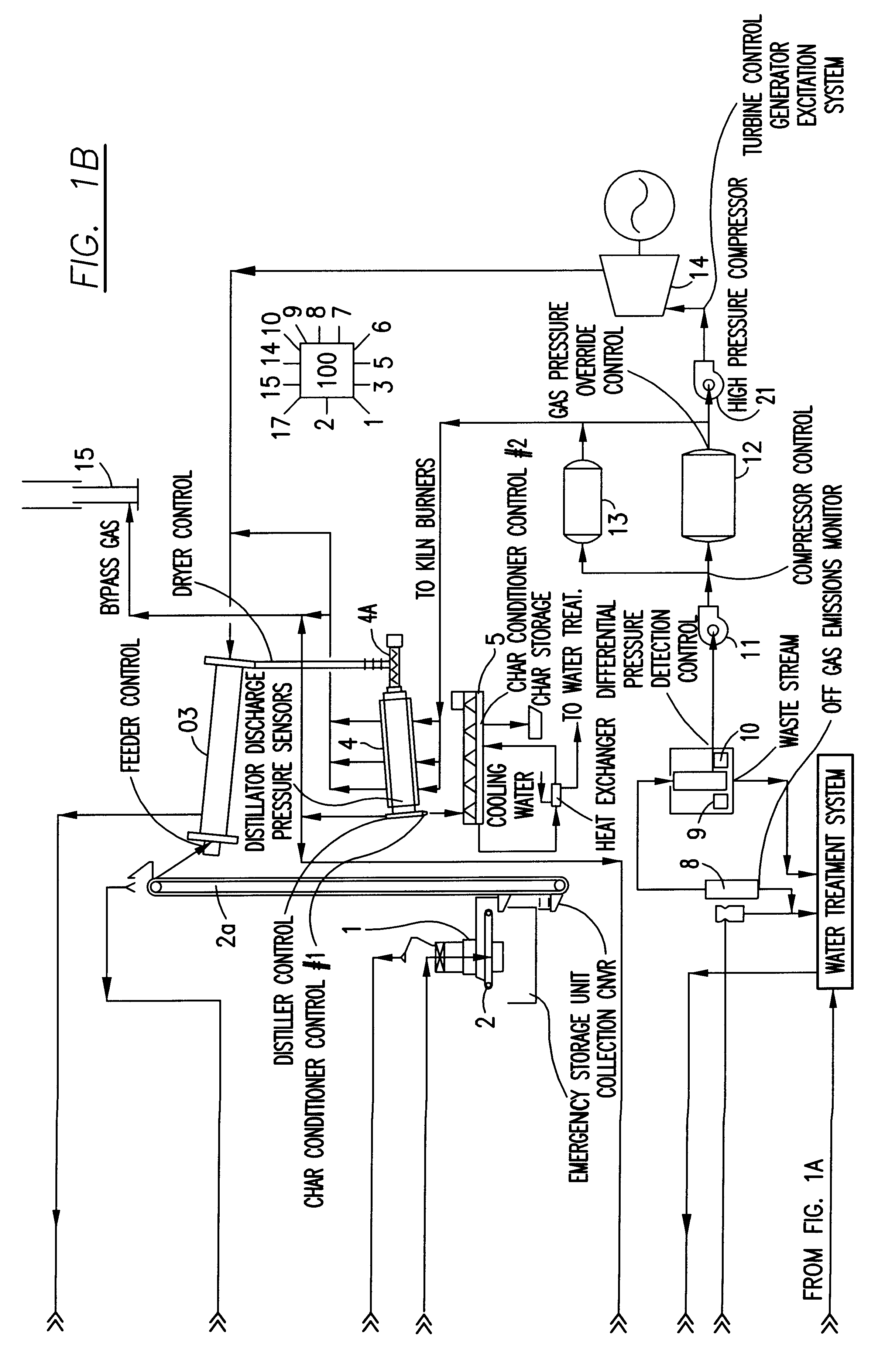Integrated control and destructive distillation of carbonaceous waste
a technology of integrated control and destructive distillation, which is applied in the direction of horizontal chamber coke ovens, emission prevention, combustion types, etc., can solve the problems of inability to control and maintain combustion reactions, diminish landfill space, and environmental inacceptability of inherent air pollution resulting from the combustion reaction
- Summary
- Abstract
- Description
- Claims
- Application Information
AI Technical Summary
Benefits of technology
Problems solved by technology
Method used
Image
Examples
Embodiment Construction
Referring now to the drawings and, in particular, FIGS. 1A and 1B, the system and process are described.
The process being controlled is a continuous self-sustaining municipal waste pyrolysis process utilizing a "real time" integrated control system to enhance and improve the energy conversion of waste to energy. The process and system are shown in FIGS. 1A and 1B. The system is based on the principle of simultaneously controlling the sorting, distillation, cracking, gas purification, and pollution control of the organic waste to energy process. The process described herein reduces the waste volume by 90% and recovers up to 95% of the available energy in the waste.
Shredded organic waste is fed into a rotary drying kiln, which utilizes waste heat from the pyrolysis unit 04 and combustion turbine 14 to dry the material to less than ten percent moisture content. Once dried, the waste is transferred to the destructive distillatory (pyrolysis) unit 04 using a rotary screw feed system 4a t...
PUM
| Property | Measurement | Unit |
|---|---|---|
| temperatures | aaaaa | aaaaa |
| temperature | aaaaa | aaaaa |
| temperature | aaaaa | aaaaa |
Abstract
Description
Claims
Application Information
 Login to View More
Login to View More - R&D
- Intellectual Property
- Life Sciences
- Materials
- Tech Scout
- Unparalleled Data Quality
- Higher Quality Content
- 60% Fewer Hallucinations
Browse by: Latest US Patents, China's latest patents, Technical Efficacy Thesaurus, Application Domain, Technology Topic, Popular Technical Reports.
© 2025 PatSnap. All rights reserved.Legal|Privacy policy|Modern Slavery Act Transparency Statement|Sitemap|About US| Contact US: help@patsnap.com



